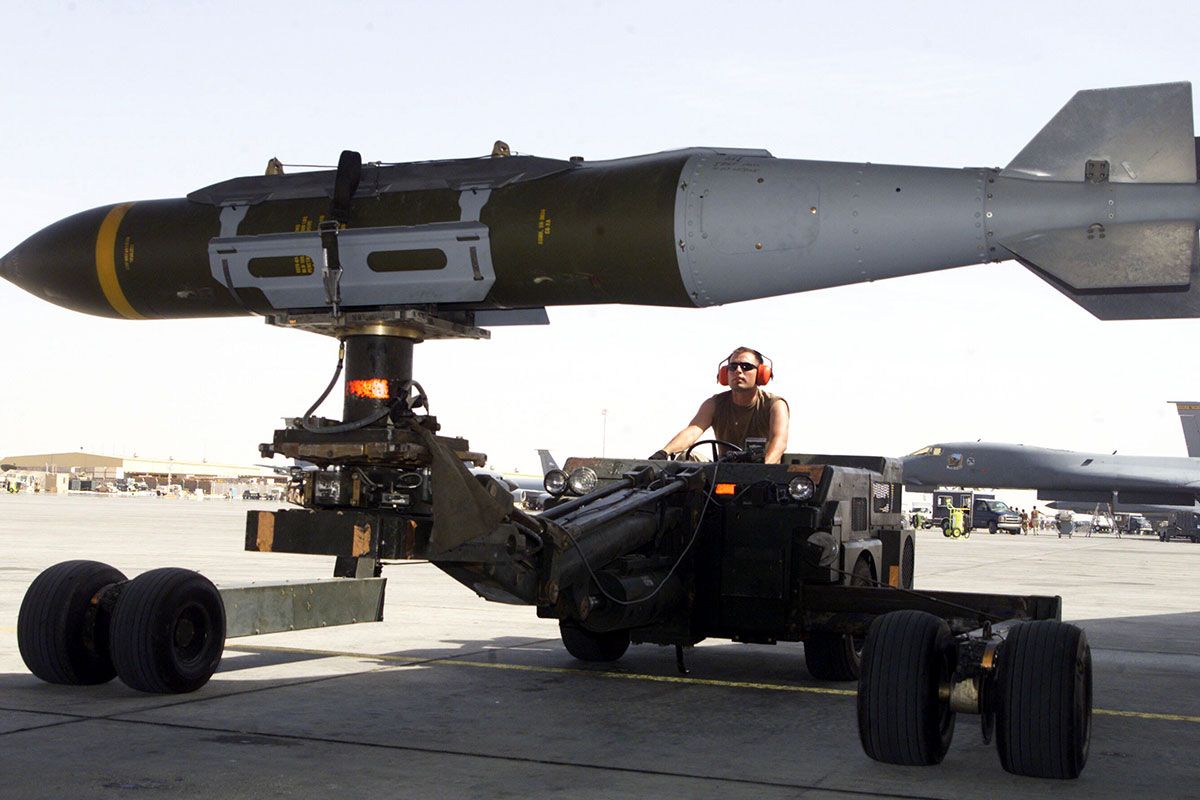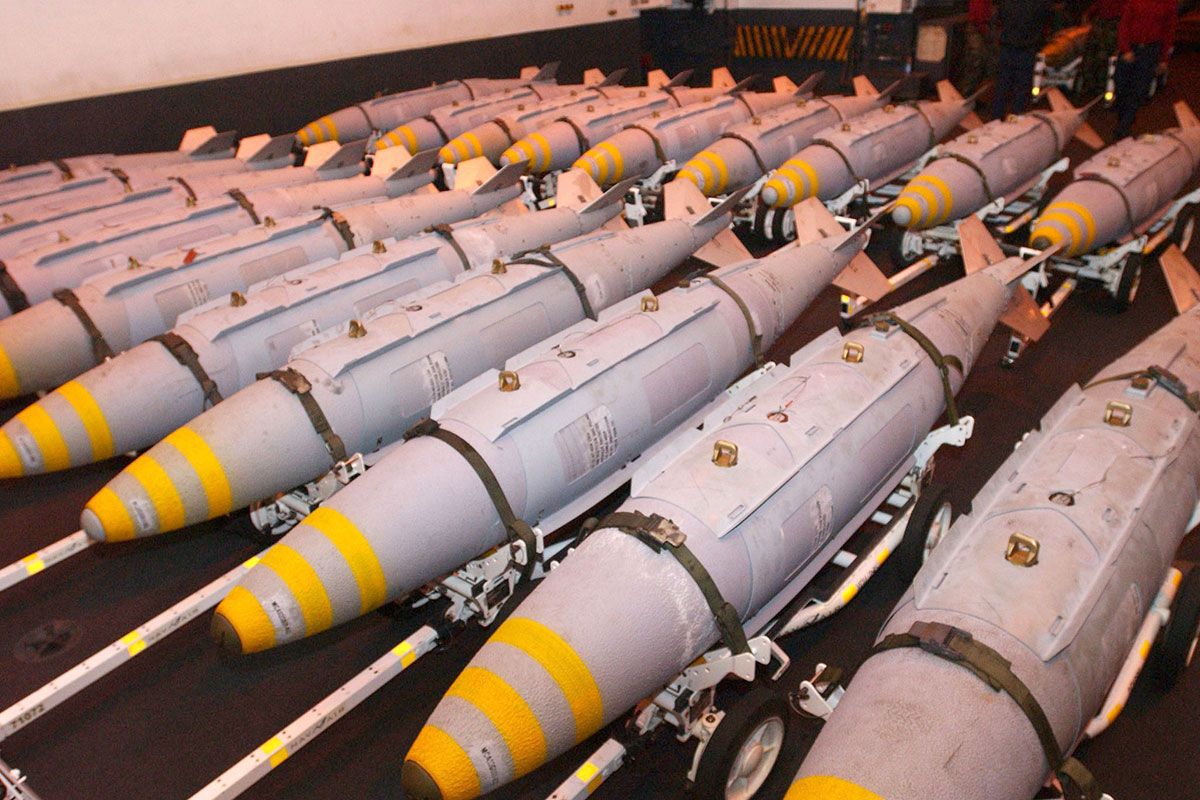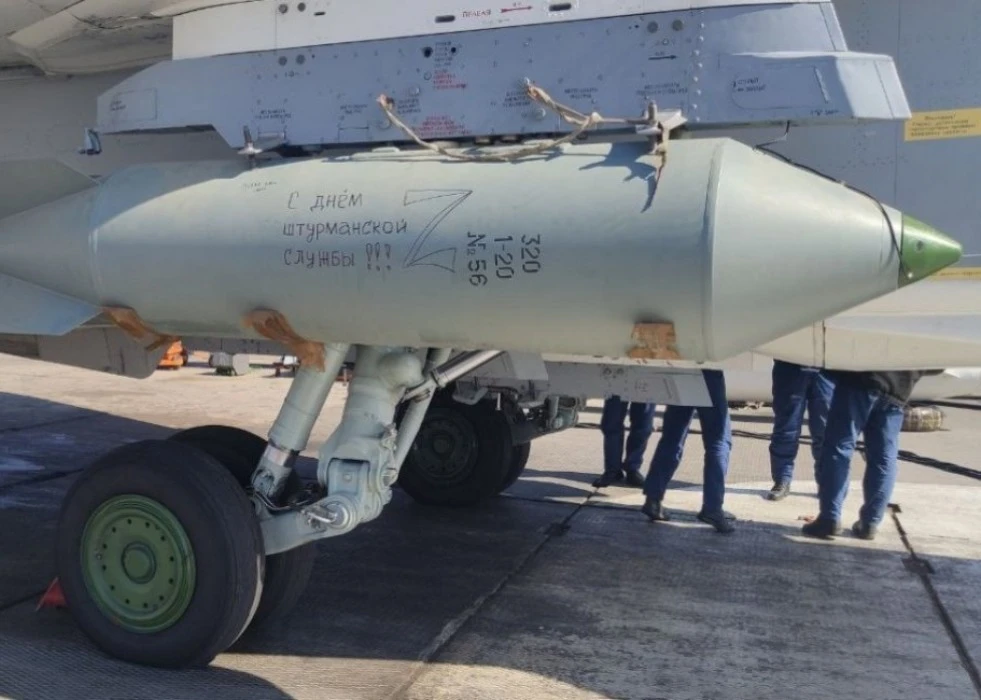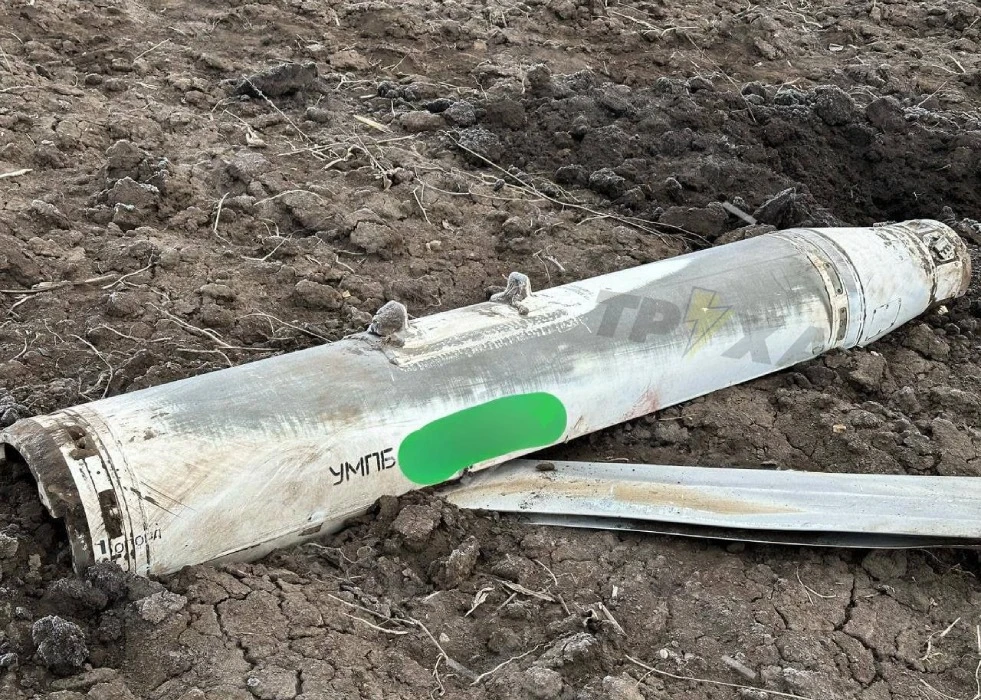The United States has equipped the Ukrainian Air Force with its Joint Direct Attack Munition Extended Range (JDAM-ER) bombs. These bombs can hit large-sized Russian targets from a distance, such as bridges and reinforced fortifications.

These kits rely on a GPS-assisted inertial navigation system (INS), which means the INS portion of the bomb must ensure that accuracy is retained significantly, even if the GPS signal is jammed. This feature makes the bomb a valuable element of warfare in the GPS-denied environment.
On the other hand, jamming GPS signals does not harm Russian systems as their navigation system benefits from the GLONASS satellite navigation system. This allows Russia to jam the frequency as much as it needs, even though GLONASS uses a nearby frequency band.

At the beginning of March, reports began emerging that the Ukrainian military was using these JDAM-ER bombs that the United States supplied. Reports that have been published in Russian media suggest that the Ukrainian military may have begun dropping JDAM-ER bombs on sites in the Bakhmut region that are held by the Russian military.
Steerable tail fins on standard Joint Direct Attack Munitions (JDAM) are used in conjunction with an inertial navigation system (INS), GPS guidance, and autopilot to steer the bomb in the desired direction.

A JDAM may reach targets up to 24 kilometres, depending on the height at which it is released; the JDAM-ER's wing kit enhances this range up to approximately 72 kilometres.
The precision-guided fire-and-forget capabilities of the JDAM bombs can offer Ukraine a fire-and-forget capability, which allows Ukrainian fighter pilots to stay at a distance from the hostile air defence systems.
On the other hand, a collection of classified US intelligence documents that were recently compromised reveals a different story. According to these documents, the JDAM bomb kits that the Ukrainian Air Force was using may have been rendered ineffective by electronic warfare conducted by the Russian government.

A document with the heading "Why are JDAM-ERs Failing?" with the stamp "secret" on it The paper investigates why JDAM-ER bombs have not been successful on the battlefield in Ukraine. Two potential causes could explain the "duds and/or misses."
One of the explanations is that the bomb fuses were correctly armed, which the Ukrainian Air Force is believed to have addressed. This option underlines the soldiers' inadequate training and the lack of familiarisation with the bomb. The second factor is that there are issues with the GPS signal, possibly caused by Russian jamming operations, which have caused some misses. Both of these factors have led some of the bombs not to hit their targets. Underlining more about the possibility of Russian electronic warfare systems being more far-fetched than the US has considered, the document indicates that GPS signal disruptions of a similar nature have caused operational difficulties with Ukraine's guided multiple-launch rocket systems (GMLRS). It has also been reported that Russian troops have effectively jammed Ukrainian drones' radar communications, preventing them from correctly detecting Russian artillery sites.













